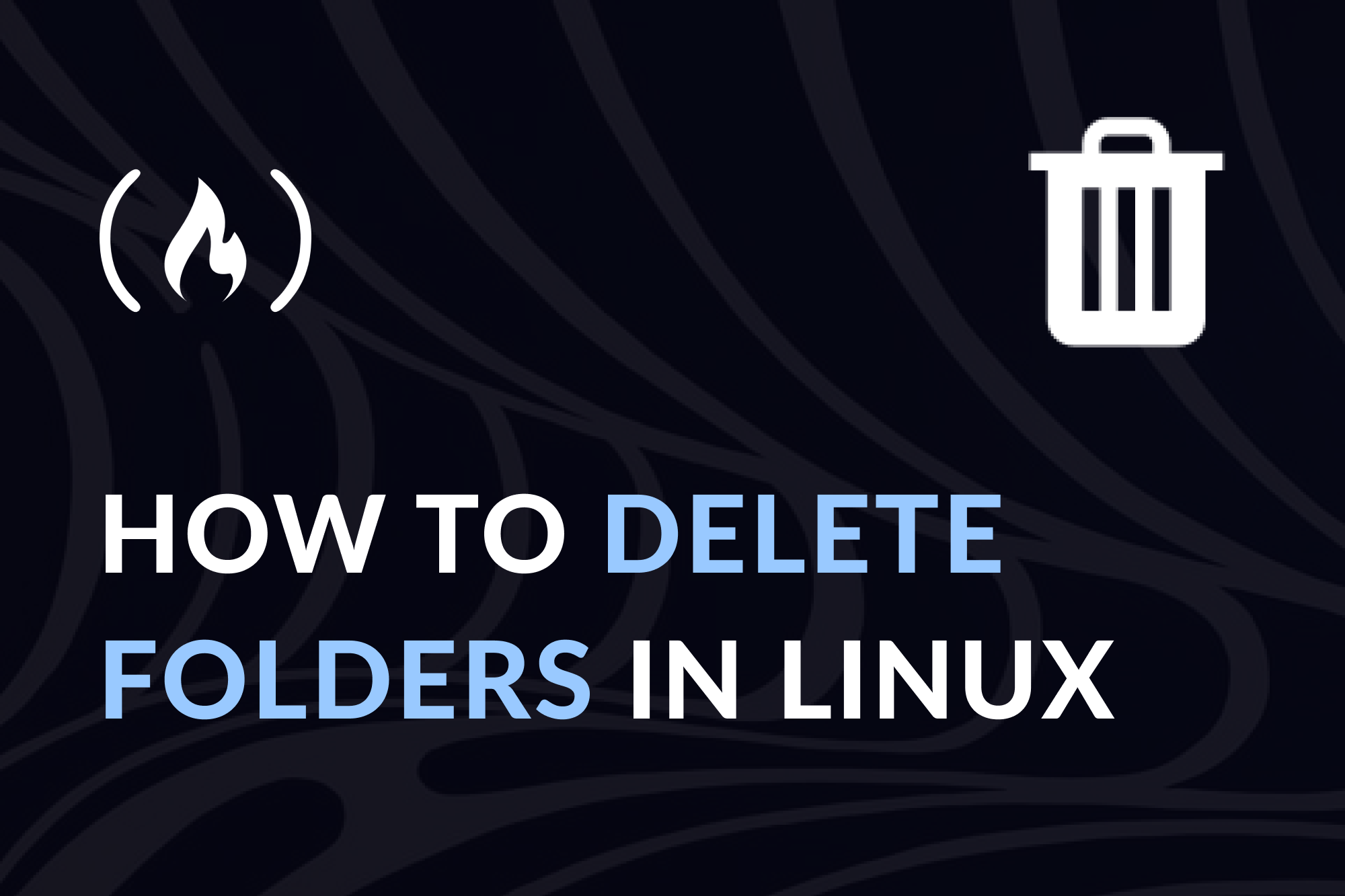If you're using a user interface, you can right-click on a directory and select "Delete" or "Move to Bin". But how do you do this on the terminal? I'll explain that in this article.
How to Remove a Directory in Linux
There are two ways to remove directories in Linux: the rm and rmdir commands.
The TL;DR of both commands is that rm deletes directories that may contain content such as files and subdirectories, while rmdir ONLY deletes empty directories.
Also, both commands delete directories permanently (rather than moving them to the trash), so be careful when using them.
Let's look at both commands in more detail.
How to Use the Linux rm command
You use the rm command to delete files and directories in Linux. For directories, this command can be used to delete a directory entirely – that is, it deletes a directory and all files and subdirectories within the directory.
Here's the syntax of this command:
rm [options] [files and/or directories]
To remove a file, say test.txt, you can use the command without options like this:
rm test.txt
For directories, you have to provide some flag options.
How to delete a folder with contents
For a directory with contents, you have to provide the -r flag. Without using this flag like this:
rm test
You will get this error: rm: test: is a directory
The -r flag informs the rm command to recursively delete the contents of a directory (whether it's files or subdirectories). So, you can delete a directory like this:
rm -r test
How to delete an empty folder
For an empty folder, you can still provide the -r flag, but the dedicated -d flag applies to this case. Without this flag, you will get the same error rm: [folder]: is a directory.
To delete an empty directory, you can use this command:
rm -d test
It is recommended to use the -d flag for empty directory cases instead of the -r flag because the -d flag ensures that a directory is empty.
If it is not empty, you will get the error rm: test: Directory not empty. So, to be sure you are performing the proper empty directory operation, use the -d flag.
How to Use the Linux rmdir Command
The rmdir command is specifically used to delete empty directories. The syntax is:
rmdir [folders]
It is the equivalent of the rm command with the -d flag: rm -d.
When you use rmdir on a non-empty directory, you get this error: rmdir: [folder]: Directory not empty.
To delete an empty directory, use this command without options:
rmdir test
The rmdir command also has the -p flag, which allows you to delete a directory along with its parent in the tree. For example, if you have this file structure:
> Test
---> Test22
In this case, Test is a directory that has the Test2 subdirectory. If you delete the Test2 directory, Test becomes an empty directory. So instead of doing:
rmdir Test/Test2 Test
# deleting Test2 and then Test
You can use the -p flag like this:
rmdir -p Test/Test2
This command will delete Test2 and afterward delete Test, the parent in the tree. But this command will throw an error if either directory is not empty.
How to Delete Directories that Match a Pattern in Linux
You can also use rm and rmdir with glob patterns. Globbing is similar to Regex, but the former is used for matching file names in the terminal.
For example, if you want to delete the directories test1, test2, and test3, instead of running:
rm -r test1 test2 test3
# or if they are empty
rmdir test1 test2 test3
You can use a wildcard glob pattern like this:
rm -r test*
# or if they are empty
rmdir test*
The asterisk * matches any mixture of characters after the "test" word. You can also apply other glob patterns. Learn more in the globbing documentation
Wrap Up
Now you know how to delete directories in Linux from the command line. You learned about the rm and rmdir commands and when to use each.
Happy coding!

